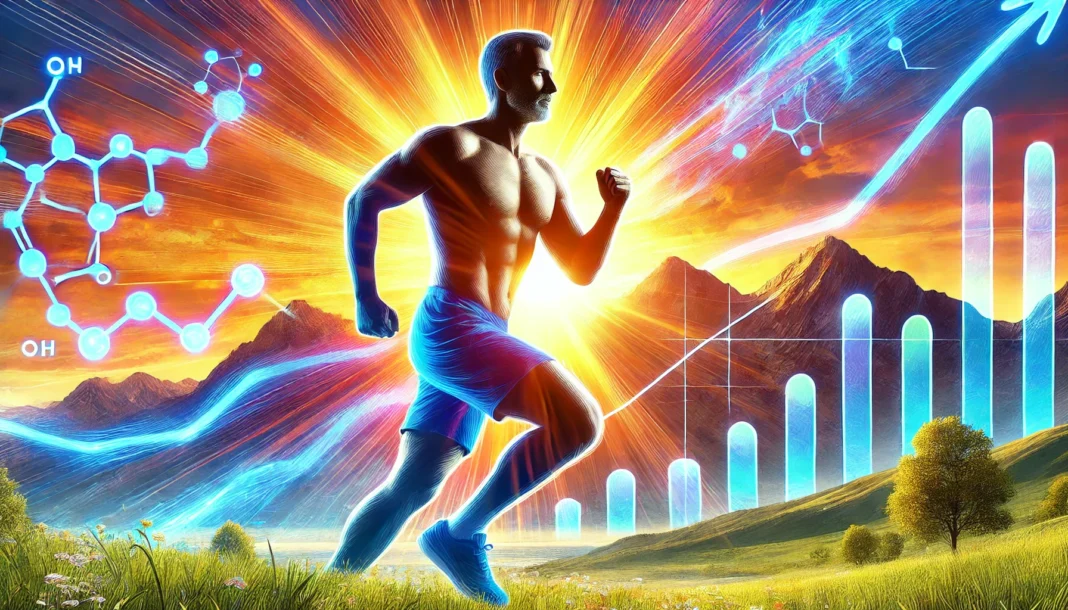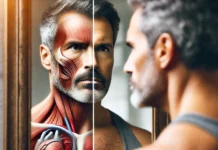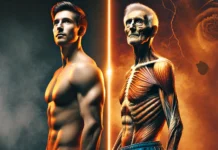Testosterone, often referred to as the primary male sex hormone, plays a critical role in the development and maintenance of various physiological functions in men. While it is widely recognized for its influence on masculinity and sexual health, its impact extends far beyond reproduction. Testosterone influences muscle mass, bone density, cognitive function, cardiovascular health, and overall longevity. Understanding the structure of the testosterone molecule provides valuable insight into its biological activity and how it interacts with the body’s systems. This guide explores the molecular structure of testosterone, its role in shaping men’s health, and its long-term effects on well-being and aging.
You may also like: How to Get Your Testosterone Levels Checked: Best At-Home and Lab Testing Options
The Molecular Structure of Testosterone
The testosterone molecule belongs to the class of steroid hormones, which are derived from cholesterol. Its chemical formula, C19H28O2, denotes a complex arrangement of carbon, hydrogen, and oxygen atoms that form a cyclopentanoperhydrophenanthrene nucleus, characteristic of all steroid hormones. This molecular framework is composed of four interconnected rings: three six-membered cyclohexane rings and one five-membered cyclopentane ring. This structure provides the stability and functionality necessary for testosterone’s biological activities.
The presence of a hydroxyl (-OH) group at the 17th carbon position plays a pivotal role in its interaction with androgen receptors. This functional group allows testosterone to bind effectively to receptor sites, initiating the biochemical processes that regulate male secondary sexual characteristics. Additionally, the conversion of testosterone into dihydrotestosterone (DHT) through the action of the enzyme 5-alpha reductase enhances its androgenic effects. Understanding these structural modifications is essential for grasping how testosterone influences various physiological functions in men.
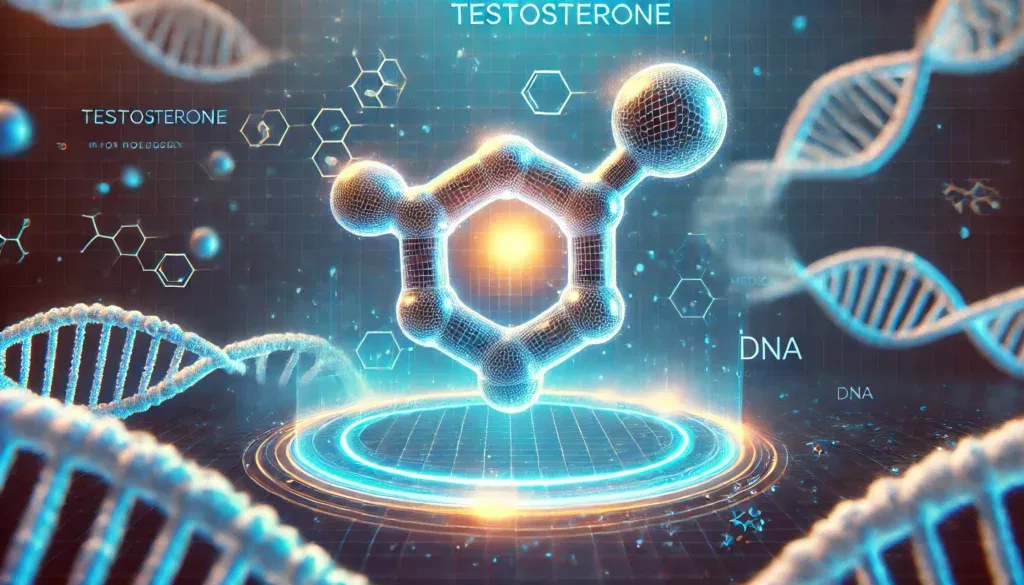
Testosterone and Male Sexual Development
Testosterone exerts a profound influence on male sexual development from the fetal stage through adulthood. During embryonic development, testosterone is responsible for the differentiation of male reproductive organs, including the testes and prostate. It stimulates the formation of the Wolffian ducts, which develop into the epididymis, vas deferens, and seminal vesicles. Without sufficient testosterone, male sexual differentiation cannot occur, leading to ambiguous genitalia or other intersex conditions.
At puberty, rising testosterone levels trigger the development of secondary sexual characteristics such as deepening of the voice, growth of facial and body hair, and increased muscle mass. These changes are mediated through androgen receptors, which are widely distributed in various tissues. Testosterone also promotes spermatogenesis by stimulating Sertoli cells in the testes, ensuring male fertility. Beyond physical attributes, testosterone plays a crucial role in libido and sexual performance, with deficiencies often resulting in erectile dysfunction and reduced sexual desire.
Testosterone and Muscle Growth
One of testosterone’s most well-known effects is its ability to enhance muscle growth and strength. It achieves this by binding to androgen receptors on muscle fibers, promoting protein synthesis and inhibiting protein breakdown. This anabolic effect is crucial for maintaining muscle mass, particularly as men age and experience natural declines in testosterone levels. Increased testosterone levels lead to greater lean body mass, reduced fat accumulation, and improved athletic performance.
Furthermore, testosterone influences satellite cells, which are essential for muscle repair and regeneration. Studies have shown that men with higher testosterone levels recover more efficiently from exercise-induced muscle damage, highlighting the hormone’s role in post-workout recovery. Additionally, exogenous testosterone administration in hypogonadal men has been associated with increased muscle hypertrophy and physical strength, underscoring its importance in muscle maintenance and overall physical performance.
Testosterone’s Impact on Bone Density
Testosterone plays a vital role in maintaining bone health by regulating bone mineral density and promoting osteoblast activity. Men with optimal testosterone levels typically have stronger bones, reducing the risk of fractures and osteoporosis later in life. The conversion of testosterone to estradiol through aromatization is particularly important in this process, as estrogen is essential for bone maintenance in both men and women.
A decline in testosterone levels with age often correlates with reduced bone mineral density and an increased risk of osteoporosis. Studies indicate that testosterone replacement therapy (TRT) can mitigate bone loss and enhance bone strength, particularly in older men with hypogonadism. By sustaining healthy testosterone levels, men can preserve skeletal integrity and reduce the likelihood of fractures associated with aging.
Cognitive Function and Psychological Well-being
Testosterone has a profound influence on cognitive function, mood regulation, and psychological well-being. Higher testosterone levels have been linked to improved memory, spatial ability, and problem-solving skills. The hormone interacts with neurotransmitter systems, particularly dopamine and serotonin, to support cognitive performance and emotional stability.
Testosterone deficiency has been associated with increased risks of depression, anxiety, and cognitive decline. Studies have suggested that men with low testosterone levels are more prone to experiencing mood disorders and reduced mental clarity. Conversely, testosterone therapy has shown promise in alleviating symptoms of depression and enhancing cognitive function in older men.
Testosterone and Cardiovascular Health
The relationship between testosterone and cardiovascular health remains a topic of ongoing research. While some studies suggest that testosterone has cardioprotective effects by improving lipid profiles and reducing inflammation, others indicate potential risks associated with excessive testosterone levels. Testosterone promotes nitric oxide production, which aids in vasodilation and enhances blood flow, contributing to cardiovascular efficiency.
However, both low and excessively high testosterone levels have been linked to cardiovascular disease. Low testosterone levels are associated with an increased risk of atherosclerosis, hypertension, and metabolic syndrome. On the other hand, supraphysiological doses of testosterone, particularly from anabolic steroid use, can elevate the risk of blood clots and heart attacks. Maintaining balanced testosterone levels is essential for optimizing cardiovascular health without increasing the likelihood of adverse outcomes.
Longevity and Aging: The Role of Testosterone
Testosterone levels naturally decline with age, leading to various physiological changes that affect longevity. The gradual decrease in testosterone contributes to sarcopenia, reduced metabolic efficiency, increased body fat, and diminished vitality. These changes collectively impact life expectancy and quality of life in aging men.
Testosterone replacement therapy has been explored as a potential intervention to mitigate age-related declines. Some research suggests that maintaining optimal testosterone levels can enhance energy levels, improve metabolic function, and support overall longevity. However, the risks and benefits of long-term testosterone therapy require careful consideration, as hormone supplementation may have varying effects on different individuals.
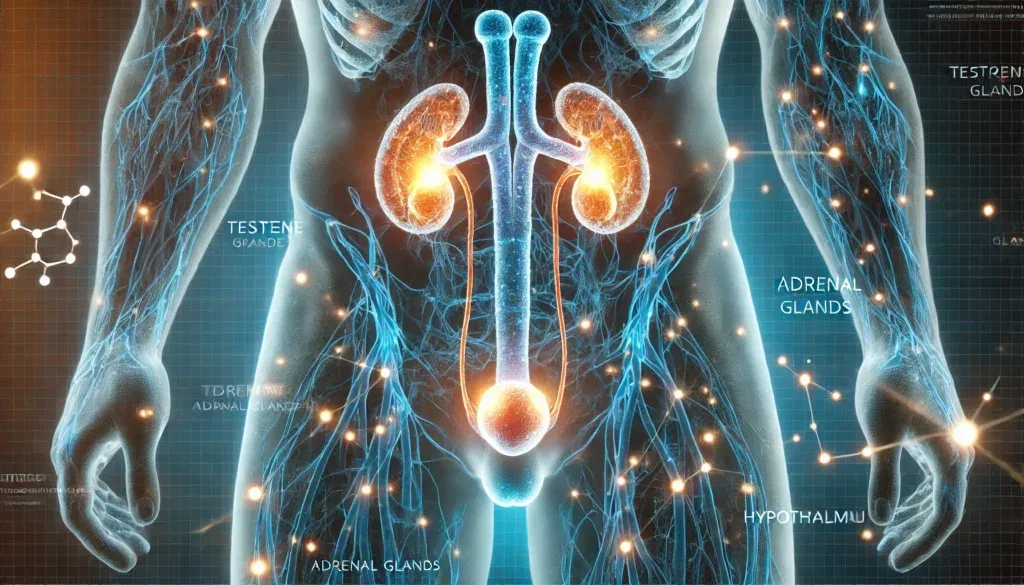
Frequently Asked Questions (FAQ) on Testosterone Structure and Its Impact on Men’s Health
1. How does the testosterone structure influence its function in the body?
The structure of testosterone hormone plays a critical role in its ability to bind with androgen receptors and exert its biological effects. The testosterone molecule consists of a four-ring carbon structure, which allows it to interact with specific receptors in muscle tissue, bones, and the brain. This interaction leads to the development of male secondary sexual characteristics, such as increased muscle mass, facial hair growth, and a deeper voice. Additionally, modifications in the testosterone structure can alter its potency, metabolism, and effectiveness, which is why synthetic derivatives are often used in medical treatments. Understanding the structure of testosterone hormone provides insights into how different forms, such as testosterone enanthate or cypionate, are used for therapeutic purposes.
2. What happens when the testosterone molecule is altered or modified?
Changes in the testosterone molecule can significantly impact its function, metabolism, and duration of action in the body. For example, the addition of an ester group to the testosterone structure prolongs its half-life, allowing for extended-release and reduced frequency of administration. This is commonly seen in testosterone replacement therapy (TRT), where modifications are made to ensure steady hormone levels. Some structural alterations can also enhance or reduce androgenic and anabolic effects, which is why different testosterone derivatives are developed for medical and performance-related use. The ability to modify the structure of testosterone hormone has led to advances in treatments for conditions like hypogonadism and muscle-wasting diseases.
3. How does testosterone structure differ from other steroid hormones?
estosterone belongs to the steroid hormone family, but its molecular structure sets it apart from other hormones like estrogen and cortisol. While all steroid hormones share a core four-ring structure, the testosterone molecule contains a specific arrangement of carbon, hydrogen, and oxygen atoms that define its androgenic properties. Estrogen, for example, has an aromatic A-ring, making it functionally distinct despite being derived from testosterone through enzymatic conversion. The structure of testosterone hormone also allows it to be converted into dihydrotestosterone (DHT) or estradiol, which can have significant physiological effects on the body. These structural differences explain why testosterone plays a dominant role in male physiology compared to other steroid hormones.
4. Can the testosterone structure be influenced by diet and lifestyle?
While the chemical structure of testosterone itself remains unchanged, diet and lifestyle factors can influence how effectively the testosterone molecule functions within the body. Nutritional deficiencies, such as inadequate zinc or vitamin D intake, can impair testosterone synthesis and receptor binding. Lifestyle factors, including stress, sleep quality, and exercise, also impact the production and metabolism of testosterone. For instance, resistance training has been shown to enhance testosterone levels by stimulating the endocrine system. By optimizing these factors, men can support the natural function of the testosterone molecule and maintain hormonal balance.
5. What role does the testosterone molecule play in mental health and cognition?
The testosterone molecule is not only crucial for physical health but also plays a significant role in cognitive function and emotional well-being. Studies have shown that optimal testosterone levels are associated with improved mood, motivation, and memory retention. The structure of testosterone hormone enables it to cross the blood-brain barrier and interact with neural receptors, influencing neurotransmitter activity. Low testosterone levels have been linked to depression, anxiety, and cognitive decline, particularly in aging men. This highlights the importance of maintaining balanced testosterone levels for both mental and physical health.
6. How does aging affect the structure of testosterone hormone in the body?
As men age, the production and metabolism of testosterone undergo changes, affecting its availability and activity. While the chemical testosterone structure remains unchanged, the body’s ability to produce and utilize the hormone efficiently declines. Factors such as increased conversion of testosterone to estrogen and reduced receptor sensitivity contribute to symptoms of low testosterone. Hormone replacement therapies aim to restore optimal levels by supplementing with bioidentical forms of the testosterone molecule. Understanding these age-related changes can help men make informed decisions about lifestyle adjustments and medical interventions.
7. How do anabolic steroids modify the natural testosterone structure?
Anabolic steroids are synthetic derivatives of testosterone designed to enhance anabolic effects while minimizing androgenic side effects. By making small modifications to the testosterone structure, scientists create compounds with greater muscle-building potential and slower metabolism. These modifications can increase the half-life of the testosterone molecule, reduce its conversion to estrogen, or enhance its binding affinity to androgen receptors. However, misuse of anabolic steroids can lead to adverse health effects, including cardiovascular issues, liver toxicity, and hormonal imbalances. Understanding the structural differences between natural and synthetic testosterone helps in evaluating their safety and effectiveness.
8. What is the role of the testosterone molecule in muscle growth and recovery?
The testosterone molecule plays a vital role in muscle protein synthesis, which is essential for muscle growth and recovery. It binds to androgen receptors in muscle cells, stimulating the production of proteins that repair and strengthen muscle fibers. This process is particularly important for athletes and individuals engaging in strength training. The structure of testosterone hormone also affects nitrogen retention, which is crucial for maintaining an anabolic state. By optimizing testosterone levels naturally or through medical interventions, individuals can improve their muscle-building potential and recovery rates.
9. How does the body regulate testosterone levels, and what happens when they are imbalanced?
Testosterone levels are tightly regulated by the hypothalamic-pituitary-gonadal (HPG) axis, which involves a feedback loop to maintain hormonal balance. When testosterone levels drop, the hypothalamus signals the pituitary gland to release luteinizing hormone (LH), which stimulates testosterone production in the testes. However, disruptions in this system can lead to hormonal imbalances, resulting in symptoms like fatigue, reduced libido, and muscle loss. Factors such as chronic stress, obesity, and endocrine disorders can affect the function of the testosterone molecule. Identifying and addressing these issues can help restore optimal hormonal health.
10. Can environmental factors impact the structure of testosterone hormone?
While environmental factors do not alter the fundamental testosterone structure, they can influence its production, metabolism, and effectiveness. Exposure to endocrine-disrupting chemicals (EDCs) found in plastics, pesticides, and personal care products can interfere with testosterone synthesis. These chemicals mimic hormones and bind to androgen receptors, potentially reducing the function of the natural testosterone molecule. Additionally, lifestyle factors such as pollution, poor diet, and lack of physical activity can contribute to declining testosterone levels. Understanding these influences can help individuals take proactive measures to protect their hormonal health.
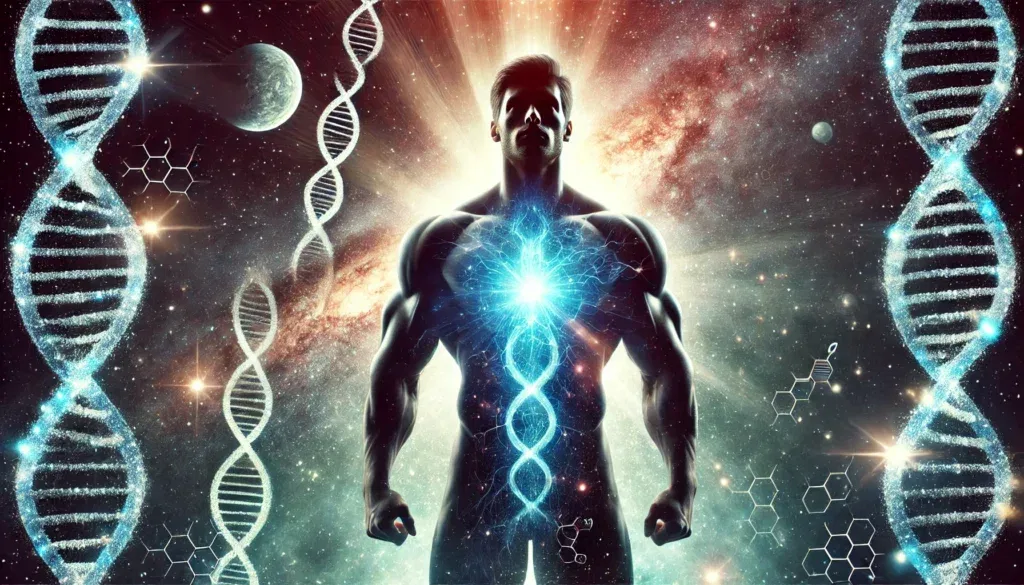
Conclusion: The Role of Testosterone in Men’s Health and Longevity
The structure of the testosterone molecule underpins its diverse physiological roles in the male body. From influencing sexual development and muscle growth to supporting cognitive function and cardiovascular health, testosterone plays a crucial role in men’s well-being. As men age, maintaining balanced testosterone levels becomes essential for preserving health and longevity. While natural methods such as exercise, proper nutrition, and stress management can support testosterone production, testosterone replacement therapy may be a viable option for those experiencing clinically significant deficiencies. By understanding testosterone’s molecular structure and physiological impact, men can make informed decisions to optimize their health and enhance their quality of life.
testosterone synthesis, male hormone balance, androgenic effects, testosterone production process, muscle growth hormone, bone density regulation, cognitive function enhancement, cardiovascular health benefits, natural testosterone boosters, testosterone replacement therapy, hormonal aging process, testosterone metabolism, effects of low testosterone, sexual health optimization, muscle recovery and testosterone, hormone balance for longevity, testosterone and mental health, endocrine system function, steroid hormone impact, testosterone deficiency symptoms
Further Reading:
Understanding How Testosterone Affects Men
Testosterone and other treatments for transgender males and non-binary trans masculine individuals
Disclaimer: The information provided in this article is for general informational purposes only. The content does not constitute professional advice of any kind, including but not limited to medical, legal, or financial advice. HisHealthMag and its contributors make no representations or warranties regarding the accuracy, completeness, or reliability of the information presented. Always seek the advice of a qualified professional for any specific concerns or questions you may have. Neither HisHealthMag nor its authors assume any responsibility or liability for any actions taken based on the information provided in this article. The views and opinions expressed are those of the author(s) and do not necessarily reflect the official policy or position of HisHealthMag.


